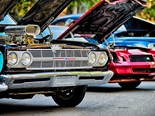1967-68 Ford Galaxie: Aussie orignal
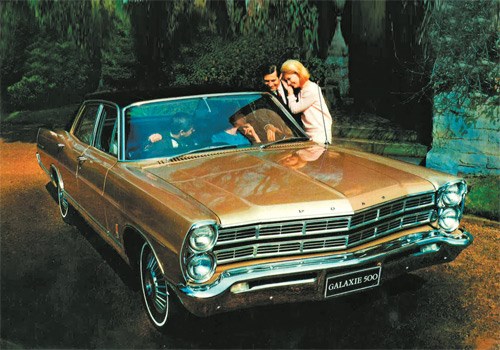 1967-68 Ford Galaxie
1967-68 Ford Galaxie

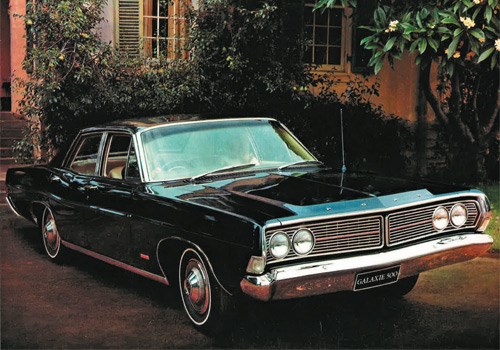 1967-68 Ford Galaxie
1967-68 Ford Galaxie

 1967-68 Ford Galaxie
1967-68 Ford Galaxie
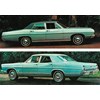
 1967-68 Ford Galaxie
1967-68 Ford Galaxie
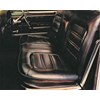
 1967-68 Ford Galaxie
1967-68 Ford Galaxie
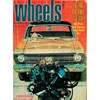

|
|
1967-68 Ford Galaxie
|

|
|
1967-68 Ford Galaxie
|

|
|
1967-68 Ford Galaxie
|

|
|
1967-68 Ford Galaxie
|

|
|
1967-68 Ford Galaxie
|
Ford's Galaxie flagship might be dismissed today as a little drab, but in 1968 alongside the XP Falcon, it was right on the money

|
|
Aussie original: 1967-68 Ford Galaxie
|
1967 - 68 Ford Galaxie
A curious event occurred in Ford’s Australian showrooms in 1967 and ’68, one that could only happen here. Every local Ford reflected the latest models available in Ford’s US and British showrooms, with the entire range clearly linked thanks to the Blue Oval’s latest styling direction.
At Cortina level, the new Mark II brought extra size, refinement and a GT version while the XR Falcon had its class-leading wheelbase, a 289ci (4.7-litre) V8 option as well as a new GT version. The new ZA Fairlane was literally unrivalled and the latest US Galaxie for 1967, with front disc brakes and a class-leading 390ci (6.6-litre) V8 option, was the first of its kind to arrive locally and reinforced local priorities. Most importantly, each model delivered on the same promise regardless of price and origin.
Even if certain Ford models were available together in other markets, only Ford Australia’s prolific local assembly operations allowed customers to order any model and body variation in similar colour and trim combinations.
Australians could buy a matching Cortina GT, XR Fairmont V8 and Galaxie 500 390, all with consistent Ford DNA. Some did. But if you didn’t have the readies, your 1967 Cortina held up well against a neighbour’s Fairmont of Galaxie. At the time, Ford was the only local large car manufacturer to offer radial-ply tyres as an option across most models. The XR Falcon GT was the first local V8 model that had them as standard. Even the utes, vans and wagons reflected these developments – the XR Falcon and Fairmont wagons were unrivalled in terms of wheelbase and their V8 options.
Ford also offered the most diverse metallic colour range over more models than any other local company. The latest expanded soft-feel vinyls were also available across the range. Ford’s local advertising no longer had to focus on just price or size – you were buying into the same experience. BMC Australia was first in attempting to grasp this ‘family’ concept with its integrated fluid-suspension range of Mini-Deluxe, Morris 1100 and Austin 1800, but it was limited.
Chrysler also got close with its new Hillman Hunter and classy Dodge Phoenix, but the VE Valiant didn’t arrive until the end of 1967 and even then had no V8 option as the new VIP shared the smaller Valiant body and wheelbase. Hero models, such as high-performance and long-wheelbase variants, were still to come.
This was new for everyday Australians. Showrooms were too often filled with old rope that undermined the good models. Ford’s old side-valve Prefects were never a good fit with the latest US Customlines in the 1950s, nor was the first Vauxhall Viva a great help to the EH Holden.
Holden would have to wait until 1969 to close the generation and performance gaps between the different Vauxhall, Holden and Chevrolet models. This consistency and ‘Family DNA’ is crucial for long-term success.
Today, Toyota and Volkswagen’s unstoppable sales success hinges on this strategy. Both heavily rely on subsidiary brands to protect that focus. Porsche’s foray into front-engine coupes was a near-death experience, but the marque was rescued by a return to its air-cooled boxer roots.
Ford’s local achievement in 1967 and ’68 marked the end for Holden’s dominance, only for it to surrender this advantage in the 1990s by becoming the ‘disposable Korean’ Festiva and Falcon taxi company.
A critical component of the 1967 alignment was the special Australian Galaxies that Ford had been developing from 1965. Despite modest sales, they were hero models that provided a tantalising glimpse of interior and exterior styling, colours, engineering and safety features that would soon filter down to the rest of Ford’s range.
The outstanding strength and quietness of the 1965 Galaxie (generated by its new "Torque-Box" construction) validated Ford Australia’s similar durability strategy for the XP Falcon.
Although the 1965 Galaxie’s straight-laced looks were no match for the swoopy new 1965 Chevrolet in the US, they hit the bullseye in Australia and lifted the ageing XP Falcon.
Before Ford Australia had its own design facilities, Detroit would send drawings of coming design features for Ford’s Geelong staff to prepare for local application. The XP’s bold new grille (evenly set in the old Mercury Comet front panels) was a useful link with the 1965 Galaxie.
Rather than match Holden’s fibreglass copy of the US Chevrolet dash, Ford developed its own RHD dash for the 1965 Galaxie with top-shelf Lincoln instruments. In addition to lifting the Galaxie’s stature, the fully-moulded dash established the design theme for coming Cortinas, Falcons and the Australian ZA Fairlane.
The 1965-66 Galaxie’s luxurious cabins with pleated expanded-vinyl gave inpiration to Ford Australia in the XP and XR Falcons. The XR Falcon was promoted as Mustang-bred, but the 1966 XR Fairmont V8 shared more with the local 1966 Galaxie’s styling and cabin upgrades than any Mustang, including its engine!
The XR Falcon’s elaborate local grille was shared with no other Falcon in the world. The Americans had obviously given Geelong a crystal ball-like peek into where the 1966-67 Galaxies were headed.
The local 1967 Galaxie took this to another level with its extra curves, full-length bodyside crease line and new semi-bucket contoured seating.
Not only was it the perfect showroom partner for the XR Falcon range in its first full year of sales, it validated the entire packaging of Ford’s first local Fairlane. It was no coincidence that the ZA Fairlane appeared to offer the almost-complete Galaxie experience for two -thirds the price.
The vertical indicator/reversing light units inside each taillight were a subtle, but important, top-shelf cue shared across Fairmont, Fairlane and Galaxie.
Given the 1967 Galaxie continued into 1968, it was also a useful preview of the padded steering-wheel centre (similar to the XR Falcon GT’s) and safety cabin hardware coming in the local XT/ZB range. The 1968 Galaxie might now be dismissed by some as a little drab, but at the time, it was on the money. Despite the ZB Fairlane’s growing sales, it still sold well.
The ’68 Gal’s plainer grille provided a halo effect for the Mark II Cortina in its first full year and the XT Falcon’s straight-laced nose from the 1966 US model. Seats were as lavish as ever and a new fully-moulded dash – with round instruments for the first time – was well timed to validate the XT Falcon’s new fully-moulded dash from the Fairlane and the Mark II Cortina’s smart new dash. Both Falcon and Fairlane shared the latest US taillight changes.
As the 1968 Galaxie’s base engine jumped to the new 302ci (4.9-litre) V8, so did the ZB Fairlane and XT Falcon options. There were bigger XT Falcon sixes and even the Cortina gained a bigger 1600 engine.
Local Galaxie production had to end by 1969 to make way for the smaller Escort and Capri models.
Despite the local Fairlane halving Galaxie sales, however, it was not over yet. Unknown to buyers, Ford had even more reasons to import and convert the then-current LTD models from the US. Its presence provided context for the arrival of the striking new local LTD, meaning Ford’s new range-topper needed absolutely no explanation on its 1973 debut!
*****
More reviews:
> Buying used: 1963 - 73 Ford Galaxie review here
> Our cars: 1963 Galaxie 500 review here
Search used:
Unique Cars magazine Value Guides
Sell your car for free right here
Get your monthly fix of news, reviews and stories on the greatest cars and minds in the automotive world.
Subscribe

.jpg)









